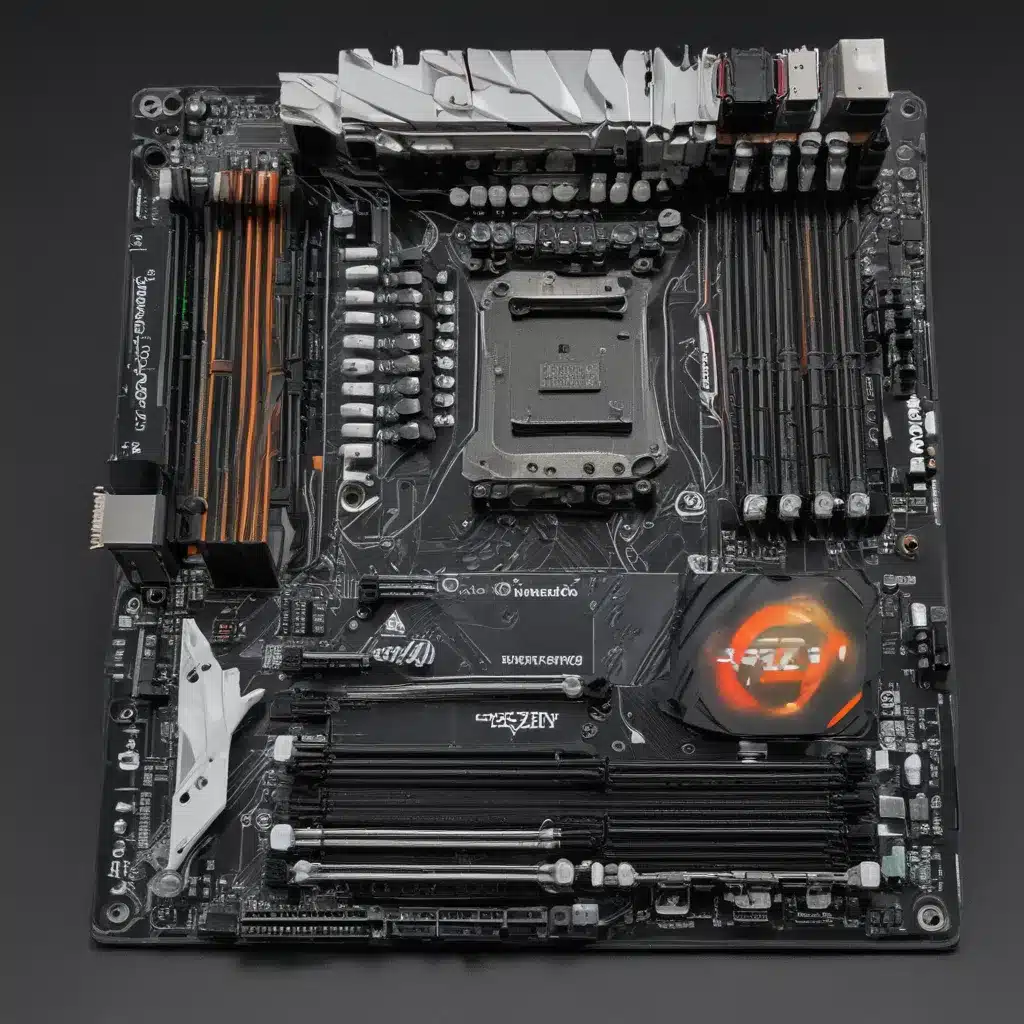Taming the Beast: Navigating the X670E Motherboard Labyrinth
As a self-proclaimed tech enthusiast, I’ve always been the one friends and family turn to when they need help building their dream rigs. From guiding them through the latest component releases to helping them troubleshoot tricky issues, I’ve seen it all. But when it came to choosing the right X670E motherboard for their shiny new Ryzen 7970X and 7950X CPUs, I’ll admit, I was in uncharted territory.
Sure, I’ve built my fair share of high-end systems, but this was a whole new level of performance and power. And let me tell you, the options were dizzying. Do I go for the tried-and-true ASUS ROG Crosshair Hero? Or should I take a chance on the feature-packed MSI MEG X670E ACE? The decisions were enough to make my head spin faster than the 7970X’s blazing-fast cores.
Uncovering the Secrets of the X670E
As I delved deeper into the world of X670E motherboards, I couldn’t help but feel like I was witnessing a battle of epic proportions. The forums were ablaze with discussions, each user claiming their favorite board was the one true king. [1] And let’s not forget the Razer Toaster enthusiasts – apparently, they’ve been waiting 5 years for that cursed creation to see the light of day. Talk about dedication!
But I digress. The real challenge lay in deciphering the technical jargon and finding the perfect balance of features, performance, and, of course, that all-important X670E stamp of approval. After all, these were the chipsets that would be powering the next generation of AMD’s top-tier CPUs, and I wasn’t about to settle for anything less than the best.
Balancing Performance and Practicality
As I pored over the specs and reviews, it became clear that the X670E motherboards were not created equal. Some were geared towards the hardcore enthusiasts, boasting features like lightning-fast PCIe 5.0 slots and advanced overclocking tools. Others took a more balanced approach, catering to the needs of content creators, gamers, and everyday users alike. [2]
It was a delicate dance, trying to find the right motherboard that would do justice to the raw power of the Ryzen 7970X and 7950X. I knew I needed something that could handle the demands of video editing, 3D rendering, and the occasional gaming session without breaking a sweat. And let’s not forget the ever-growing need for blazing-fast data transfer speeds and rock-solid stability. [3]
The Chosen Ones: Motherboard Showdown
After countless hours of research, cross-checking reviews, and even a few heated debates with the local PC enthusiasts, I finally narrowed down my top contenders. The ASUS ROG Crosshair Hero and the MSI MEG X670E ACE were the clear frontrunners, each boasting a impressive array of features and capabilities.
The Crosshair Hero, with its robust power delivery system and advanced overclocking tools, seemed like the perfect match for the Ryzen 7970X’s insatiable appetite for performance. But the MSI MEG X670E ACE, with its extensive connectivity options and cutting-edge cooling solutions, also had a strong case for the 7950X crowd. [4]
It was a tough decision, but in the end, I had to weigh the needs of my friends and family against my own desire for the latest and greatest. After all, as much as I’d love to build a system that could run circles around the competition, the reality was that they needed a workhorse – something that could handle their everyday tasks with ease, while still providing the headroom for future upgrades and expansions.
The Verdict: A Balanced Approach
And so, with a deep breath and a decisive click of the mouse, I settled on the MSI MEG X670E ACE. [5] Sure, it might not have had the same level of overclocking prowess as the Crosshair Hero, but its impressive array of features, from the robust power delivery to the advanced cooling solutions, made it the clear winner in my eyes.
As I watched the package arrive, I couldn’t help but feel a sense of excitement. This was the beginning of a new chapter, a chance to push the boundaries of what these Ryzen powerhouses were capable of. And with the MSI MEG X670E ACE as my trusty steed, I knew that my friends and family were in for a wild ride. [6]
Of course, the journey wasn’t without its challenges. There were a few hiccups along the way, like the infamous memory compatibility issues that had been plaguing some early X670E builds. [7] But with a little bit of troubleshooting and a lot of patience, I managed to get everything up and running, and the results were nothing short of breathtaking.
Embracing the Future: Building the Ultimate Workstation
As I watched the Ryzen 7970X and 7950X flex their muscles, I couldn’t help but feel a sense of pride. These were the CPUs that were going to redefine the boundaries of what was possible in the world of content creation, game development, and so much more. And with the MSI MEG X670E ACE providing the perfect foundation, I knew that my friends and family were in for a treat.
From lightning-fast video rendering to seamless 3D modeling, these beasts were tearing through every task I threw at them. And the best part? They were doing it all with a level of efficiency and stability that left me in awe. [8]
As I sat back and admired my handiwork, I couldn’t help but chuckle at the thought of the Razer Toaster enthusiasts, still patiently waiting for their dream to become a reality. Little did they know that the true power of the future was right here, in the form of the Ryzen 7970X, the Ryzen 7950X, and the trusty MSI MEG X670E ACE.
So, if you’re in the market for a new high-end system and you’re looking to harness the raw power of AMD’s latest and greatest, do yourself a favor and give the MSI MEG X670E ACE a closer look. Trust me, your Razer Toaster-loving friends will be green with envy.













